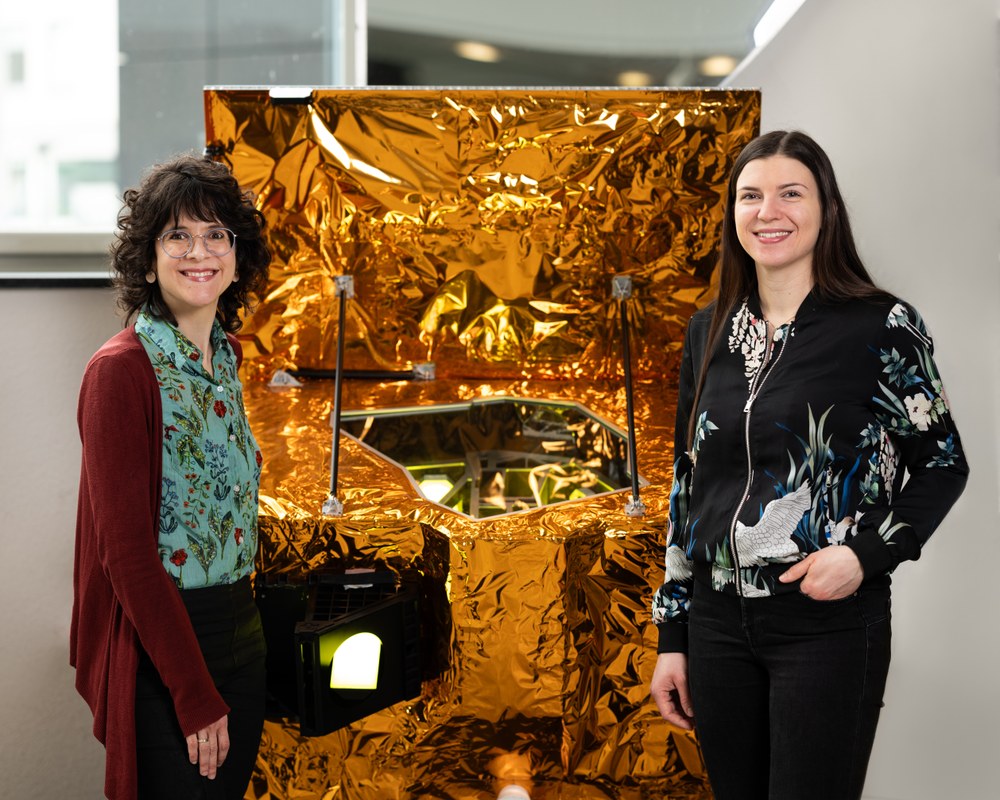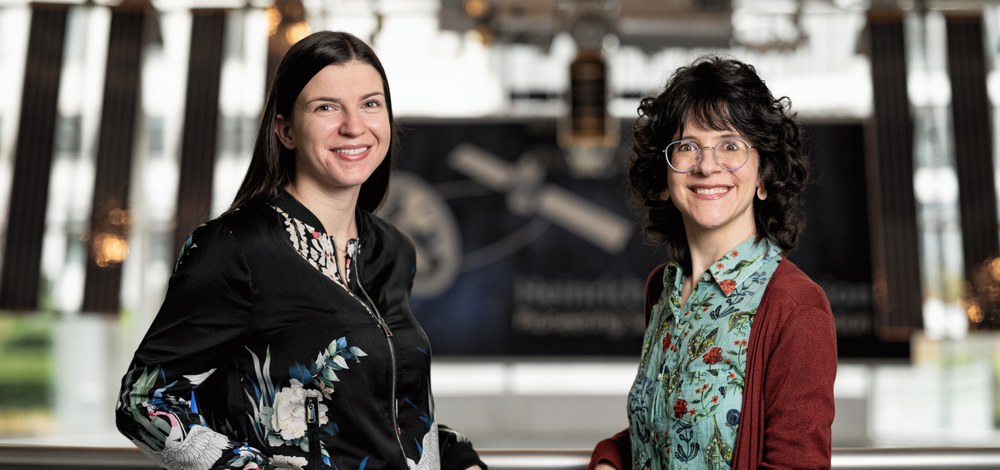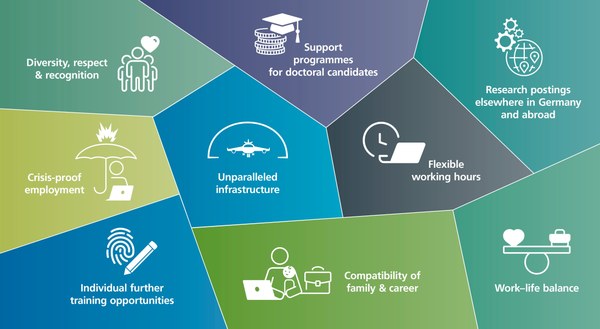Seraphine Luneau and Inés Usandizaga
Seraphine's field of study: Geography
Inés' field of study: Mechanical engineering
Now: German Space Agency at DLR
Seraphine Luneau studied geography and Inés Usandizaga has a doctorate in mechanical engineering. Currently, they both work as research assistants in the Earth Observation department of the German Space Agency at DLR.
In this joint interview, they tell us about their work, what the data from satellite missions can be used for and about their special moments.
Seraphine and Inés, what do you look forward to when coming to work in the morning?
Seraphine: What I look forward to most is socialising with my colleagues. We are quite a large department with a wide variety of backgrounds, so we learn a lot from each other.
Inés: I can only agree with that! I am proud that we are all working together on exciting Earth observation missions that provide valuable data for society.
What are you researching or working on?
„When the satellite is flying, it is also our job to ensure that the collected data is used“
Inés: In the Earth Observation department of the German Space Agency at DLR, we develop and build satellites on behalf of the German government with many industrial and academic partners. In other words, we support and manage the process from technology development to delivery to the launch pad. I work as a systems engineer for the French-German Methane Remote Sensing Lidar Mission (MERLIN), which will measure methane concentration in the atmosphere from 2029.
Seraphine: When the satellite is flying, it is also our job to ensure that the collected data is used. To this end, we develop and implement funding programmes and provide information about potential uses for this data. In this way, the satellite data can be used for many environmental issues or in the area of climate adaptation.

What does your typical working day involve?
Seraphine: In our department, we are the interface between science and users from industry and public institutions, so a large part of my working day involves communicating with the various stakeholders. To do so, we always have to keep abreast of the latest developments – including what is relevant in Earth observation at the European and international level, for example by attending events. Public relations work is also part of my daily work. This could involve visiting a trade fair where we present our satellites, or writing news articles for our website or our newsletter.
Inés: We work very closely with our industrial partners in the development and construction of satellites. We check for any deviations from the design or development requirements and conduct extensive reviews of the flight hardware to ensure that the satellites deliver the required scientific performance.
„With MERLIN, methane, a critical greenhouse gas in Earth's atmosphere, will be actively measured from space for the first time“
Where and how is your work being used?
Inés: With MERLIN, methane, a critical greenhouse gas in Earth's atmosphere, will be actively measured from space for the first time. This data is vital for understanding the global methane cycle, as there is still a great level of uncertainty in the global determination of methane emissions.
Seraphine: Of course, monitoring a satellite mission from the user's perspective also begins before the launch. However, once a mission has been successfully launched into space, the data obtained is particularly interesting for various applications. The data from the MERLIN mission will be very important for identifying global methane sources in the future. This is essential for taking measures and complying with international treaties to reduce this greenhouse gas and counteract global warming.

What are the highlights of your work?
Inés: Satellite missions are often long-term projects, which is why I’m particularly proud when we work well together as a team and overcome obstacles together to prepare for launch.
Seraphine: A special moment is working together with my colleagues on new ideas. How can we ensure that the satellite data is utilised later? What do we need to do to ensure that this data can also be used in public institutions? It is a highlight when a research project funded by us is successfully completed and I see how more and more authorities are now using Earth observation data in their daily work.
What special skills can you make good use of in your job?
Seraphine: Before I moved (back) to DLR, I worked on a knowledge transfer project. I believe that, above all, you need the ability to present complex content in a simple way to reach a large audience. This ability is particularly important if I want to convey to potential users which tasks, such as public service tasks, can also be solved with satellite data.
Inés: I would also emphasise my communication skills and empathy to understand the other person's point of view in complex technical problems and find a good solution that helps the entire project move forward.
Leave us a final thought.
Seraphine: After completing an internship at the German Space Agency at DLR I continued working as a student assistant throughout my geography studies. During this time, I gained exciting insights into various fields of application of satellite data. After completing my master’s degree, I changed jobs but returned to DLR after some time. I have now been back in the Earth Observation department for over two years, this time as a research assistant rather than a student assistant. Since then, I’ve had a lot of great opportunities. I’ve been able to further my education and take on new tasks and responsibilities. I’m very grateful for these opportunities.




